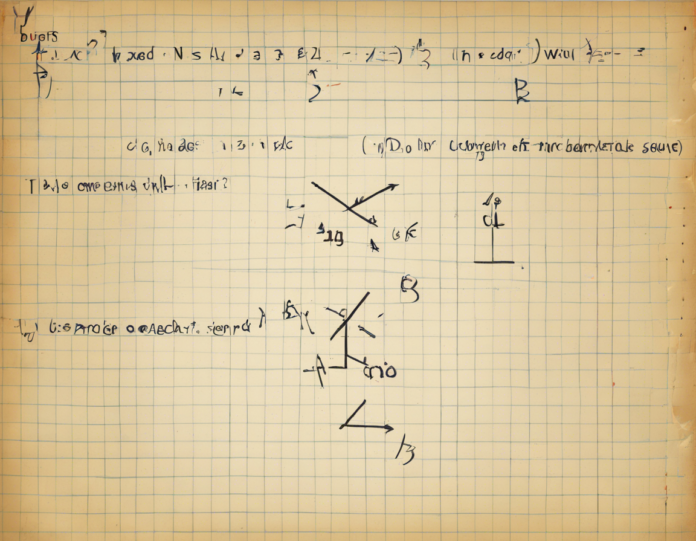In the realm of mathematics, there are countless formulas and equations that students and professionals encounter on a regular basis. One of the most famous and fundamental formulas is the Pythagorean theorem, which states that in a right-angled triangle, the square of the length of the hypotenuse (the side opposite the right angle) is equal to the sum of the squares of the lengths of the other two sides. Mathematically, this is expressed as a² + b² = c², where "a" and "b" are the lengths of the two shorter sides (often referred to as the legs of the triangle), and "c" is the length of the hypotenuse.
The Origins of the Pythagorean Theorem
The Pythagorean theorem is named after the ancient Greek mathematician Pythagoras, who is credited with its discovery. The concept has been known and used for thousands of years in various cultures, but it was Pythagoras and his followers who proved the theorem and provided a mathematical basis for it.
Understanding the Components
-
a and b: In the context of the Pythagorean theorem, "a" and "b" represent the lengths of the two perpendicular sides of a right triangle. These sides are often labeled as the base and height, or width and length, depending on the orientation of the triangle.
-
c: The length of the hypotenuse, denoted as "c," is the side opposite the right angle in a right triangle. It is the longest side of the triangle and is always opposite the right angle.
Application of the Formula
The Pythagorean theorem is not just a historical curiosity; it has numerous practical applications in various fields, such as:
1. Geometry:
- Calculating distances: The theorem is frequently used to find the distance between two points in two-dimensional space.
- Constructing perpendicular lines: By using the theorem, perpendicular lines can be constructed accurately.
2. Engineering:
- Architecture and construction: Engineers and architects use the theorem to ensure structures are built with correct angles and dimensions.
- Electrical engineering: In circuit analysis, the theorem is used to determine the total resistance in a circuit.
3. Physics:
- Mechanics: The Pythagorean theorem is applied in calculating the displacement, velocity, and acceleration of objects in various physical scenarios.
- Optics: It plays a role in determining the focal length of lenses and mirrors.
4. Navigation:
- GPS systems: The theorem is utilized in satellite navigation systems to calculate positions accurately.
- Aviation and maritime navigation: Pilots and navigators use the theorem to plan flight paths and maritime routes.
Proof of the Pythagorean Theorem
There are numerous ways to prove the Pythagorean theorem, with some of the most famous proofs involving geometric shapes and algebraic manipulations. One of the common geometric proofs involves dissecting a square into four right triangles and rearranging the pieces to form a larger square whose area is equal to the sum of the areas of the smaller squares on the triangle's sides.
Special Triangles and Pythagorean Triples
In some cases, the lengths of the sides of a right triangle form special relationships that satisfy the Pythagorean theorem. These special triples of integers are known as Pythagorean triples. The most famous example is the 3-4-5 right triangle, where the sides are in the ratio of 3:4:5 and satisfy the theorem (3² + 4² = 5²).
Practical Examples
1. Example 1:
Consider a right triangle with one leg measuring 3 units and the other leg measuring 4 units. Using the Pythagorean theorem, we can find the length of the hypotenuse:
- a = 3
- b = 4
- c² = a² + b²
- c² = 3² + 4²
- c² = 9 + 16
- c² = 25
- c = √25
- c = 5
So, the length of the hypotenuse is 5 units.
2. Example 2:
Suppose we have a right triangle with legs measuring 5 units and 12 units. Using the Pythagorean theorem:
- a = 5
- b = 12
- c² = a² + b²
- c² = 5² + 12²
- c² = 25 + 144
- c² = 169
- c = √169
- c = 13
The length of the hypotenuse in this triangle is 13 units.
Frequently Asked Questions (FAQs)
Q1: Who discovered the Pythagorean theorem?
A: The Pythagorean theorem is attributed to the ancient Greek mathematician Pythagoras and his followers.
Q2: What does the Pythagorean theorem state?
A: The theorem states that in a right triangle, the square of the length of the hypotenuse is equal to the sum of the squares of the lengths of the other two sides.
Q3: What are Pythagorean triples?
A: Pythagorean triples are sets of three positive integers that satisfy the Pythagorean theorem, such as 3, 4, and 5 (3² + 4² = 5²).
Q4: What are some practical applications of the Pythagorean theorem?
A: The theorem is used in fields like engineering, physics, navigation, and architecture for tasks such as distance calculation, circuit analysis, and route planning.
Q5: How is the Pythagorean theorem proven?
A: The theorem can be proved using various methods, including geometric dissection and algebraic manipulation to show the relationship between the areas of the squares on the sides of a right triangle.
In conclusion, the Pythagorean theorem is a foundational concept in mathematics with applications that extend far beyond the classroom. By understanding and applying this fundamental formula, professionals in diverse fields can solve complex problems and make calculations with precision and accuracy.

